 |
| The Emotiva CMX-2 promises to remove DC offset from your audio setup. |
Debugging problems with your audio setup can often be maddening. Some of the common problems that audiophiles and home theater enthusiasts run into are in the form of buzzing or hum. The buzzing often emanates from one of two places: 1) from the speaker or 2) directly from an audio component.
When the buzz is coming out of the speaker, it’s often related to a ground issue with the electrical setup. When the buzz is coming from an audio component, it’s oftentimes more difficult to diagnose. We’re going to cover a specific issue called DC offset that typically affects the power transformers in your audio equipment and makes them buzz.
What is DC Offset and Why is it a Problem?
DC Offset, sometimes called “DC in the AC,” is usually the result of unbalanced loads or flaws in the power distribution system. This can cause DC current flow in the transformers that power your audio equipment, making them run hotter and produce an audible, mechanical hum. In some extreme cases, DC offset can even damage your equipment. If you have it, it’s therefore a really good idea to deal with it.
What are the Typical Symptoms of DC Offset?
The typical symptoms of DC offset are an audible buzzing or hum from the audio equipment chassis. It’s important to note that DC offset-induced buzzing will not emanate from the loud speakers. Specifically, it will be the power transformer inside the equipment that will be buzzing. In most instances, it will only come from the equipment with large toroidal transformers, like large power amplifiers. The buzzing will happen even if nothing is connected to your amplifier. If you were to bring that buzzing equipment to another home, the symptom may disappear (a telltale sign of DC offset).
What Causes DC Offset?
The usual suspects that cause DC offset are household dimmers, microwaves, and switching power supplies. Switching powers supplies, which use half wave bridge rectifiers, draw current in uneven pulses. It’s these uneven pulses that can cause large transformers to vibrate and buzz or hum. When a transformer starts to vibrate, it can’t run efficiently and can either won’t function optimally through reduced dynamics or headroom or can cause damage to the equipment. (There’s a slide deck here on DC offset at UC Davis if you’re interested in some more info).
How can DC Offset be Measured?
If you talk to your average electrician and ask them about DC offset, they’ll probably look at you strangely. Most electricians have never heard of such a thing. Moreover, if they try and measure DC offset on the power lines in your house, they typically won’t know how to do it and won’t come up with any conclusive results.
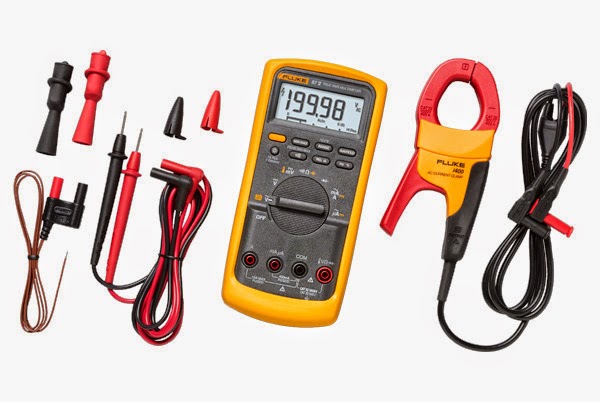 |
| Most electricians don’t have a multimeter sensitive enough to measure DC offset. |
Part of the reason for this is that the typical multimeter that an electrician uses isn’t sensitive enough to measure DC offset. (If you’re interested in how to measure DC offset, there’s an article here on Wiki How, although I cannot vouch for the accuracy of this article so be warned).
How Can I correct DC Offset?
DC Offset can prove to be a maddening problem. In some instances, the buzzing will be subdued during some points of the day and then extremely noticeable at other times. This is due to the simple fact that something in your house is causing the DC offset in the first place. So, for example, if it’s the microwave oven light, you’ll only notice it when the microwave light is on. If it’s a particular dimmer or set of dimmers, then you may notice an increase in the buzzing loudness when that combination of factors happens. In case you’re wondering, having your audio equipment on a dedicated circuit or breaker won’t prevent DC offset issues.
Typically, you can try and debug DC offset issues by going to your house’s breaker and turning off one breaker at a time. The buzzing will stop once you turn off the breaker with the offending culprit. Hopefully, if you’re lucky, you can find the specific breaker that causes the problem and then find out what electrical items are on that breaker and narrow down what’s causing the problem and remove it.
In most cases, however, you’ll be stuck and have to look elsewhere for a solution. Your first instinct may be to add a power conditioner. That won’t work. Even if you have really expensive, top-of-the-line units like Furman power conditioners or complete power regenerators, like those from PS Audio, they won’t make any difference at all with DC offset problems.
To solve transformer buzzing caused by DC offset, you need a specifically designed power strip that eliminates DC offset. These kinds of units are not easy to find. Originally, PS Audio made such a unit called the Humbuster III.
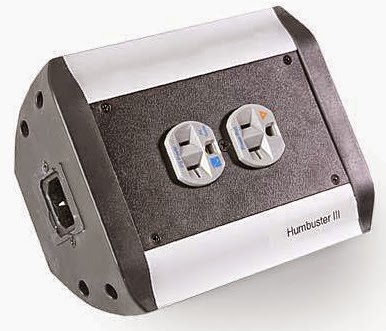 |
| PS Audio’s now discontinued Humbuster III |
At $299 the Humbuster was a bit expensive but would do as its name implied—get rid of the transformer hum in your audio equipment caused by DC offset. The Humbuster III would get slightly warm in the process, but did the trick.
An important aspect of the PS Audio solution was that it was not current limiting. In other words, plugging in an affected piece of audio equipment like a power amplifier wouldn’t limit the current that the amplifier could draw. Therefore, your equipment would function at peak performance.
Sadly, PS Audio discontinued production of the Humbuster III some time ago. Audiophile and home theater enthusiasts have therefore been left without a viable commercial solution until now.
Enter the CMX-2: An Audiophile Solution for DC Offset
I recently stumbled upon Emotiva’s CMX-2. On the surface, you’d think that the CMX-2 was just another power conditioner. However, if you look carefully, Emotiva describes it as an “AC line restoration and common mode filter system.” In other words, that “common mode filter” is what addresses DC offset by filtering out that high-frequency line noise and the effects of DC offset on your audio equipment. I decided to put the CMX-2 to the test and see if it would work as well as the PS Audio Humbuster III.
My CMX-2 arrived along with the Emotiva XPA-1L monoblock amplifiers that I previously reviewed. The CMX-2 shares the same form-factor as it’s 6-outlet sibling, the CMX-6. The CMX-6, however, does not address any DC offset issues.
 |
| Interior view of the CMX-2. |
The CMX-2 comes only in a two-outlet configuration. It’s a very heavy power strip and is all metal. In no way, shape, or form does the CMX-2 feel cheap. however, it’s design is a cause for some care.
It’s very sharply machined. Let me repeat again: It’s very sharply machined. If you’re not careful, you can cut yourself on the metal of the unit. If you drop it slightly you can cause some serious dents and marks on a hardwood floor. If you drop the edge of the unit on your foot, you’ll end up in the hospital for stitches.
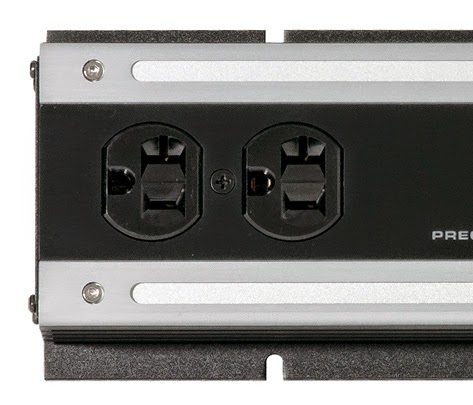 |
| The CMX-2 comes only in a 2-outlet configuration |
On the plus side, you can screw-mount the unit thanks to some slots located on both sides of the unit. This makes it possible to wall mount the Emotiva CMX-2 or affix it in a rack installation. There’s no built-in power cord so you can use any power cord you want. The power receptacle is angled, however. I’m not sure why Emotiva did this or what the purpose is. If I were to guess, I’d have to say it was to be able to fit it next to the reset switch. Otherwise, they would have had to make the unit wider. Regardless, it’s just odd.
As an added bonus, the CMX-2 also provides an indicator of any line faults. A set of blue LED lights light up and will let you know if the line is correct, you have an open ground, an open neutral, a hot/reversed ground, an open hot, or a hot/neutral reversed. The indicator is solely visual and you need to reference the chart on the unit. There’s no audible alarm or different colored LED indicator if any of these should exist.
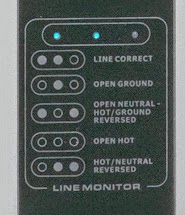 |
| The line monitor indicator will show you the status of your electrical circuit. |
I wish Emotiva would have thought through some of their aesthetic choices on this unit a bit more—especially the way in which the unit is machined.
Aesthetics aside, the CMX-2 works and works flawlessly in removing DC offset. This is one of those audiophile “tweaks” that either works or it doesn’t. I was able to test the CMS-2’s ability to remove DC Offset with my household microwave oven-range. Turning on the range’s light to “low” causes very loud transformer in my multichannel power amplifier. Turning the range light off causes the problem to go away.
I plugged my large, multichannel, home theater amplifier into the CMX-2 and then turned on the range light. Dead silence followed. Plugging the amplifier directly into the wall and then turning on the range light brought about a loud buzzing that you could easily hear from 30 feet away.
For the better part of six months that I’ve used the CMX-2, I haven’t noticed any reduction in dynamics or amplifier performance. In other words, the CMX-2 doesn’t get in your way. At the same time, it doesn’t make any flowery claims. It won’t improve the tonality of your audio system. It doesn’t promise any outlandish voodoo. Emotvia’s CMX-2 is designed to eliminate DC offset and it does that flawlessly.
In summary, if you have DC offset or suspect you have DC offset issues, the $99 CMX-2 is a simple and effective way to solve that problem. With the PS Audio Humbuster III no longer available, the CMX-2 is one of the only games in town for dealing with DC offset. If you have transformer buzz and aren’t quite sure it’s DC offset, you can try out the CMX-2 with free shipping. If it works, you can keep it; and if it doesn’t then you know that your problem lies elsewhere. You can just pay return shipping back. I wish all purported audio tweaks were as scientifically-sound and snake oil free. The CMX-2 is only available online direct from Emotiva.


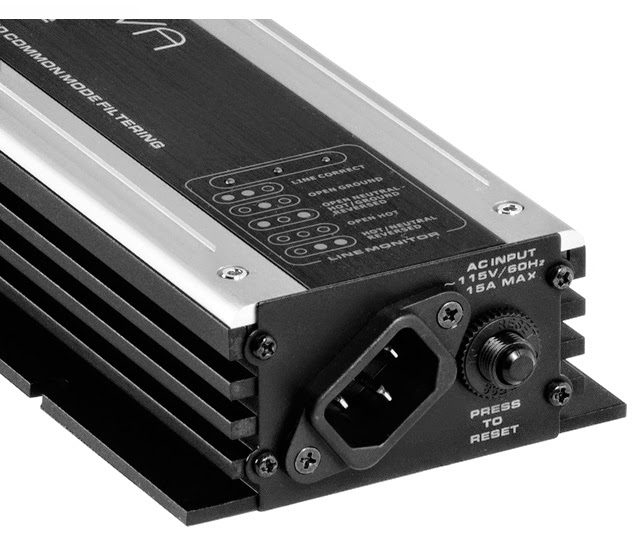













Van Alstine (avahifi.com) also makes a unit called the "Humdinger" that eliminates noise from DC offset. They also have an option on some amps to build in DC offset protection circuitry.
Comments are closed.